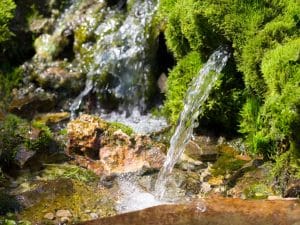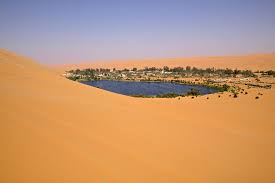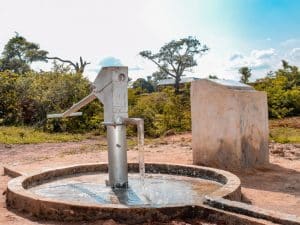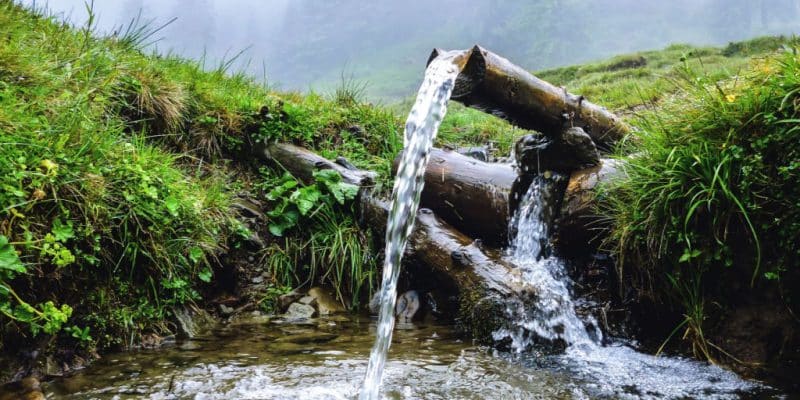To meet the daily water needs of the world's populations, groundwater would be the best alternative. According to the non-governmental organization (NGO) WaterAid, the resource is available, especially in Africa where there is one of the largest aquifer reservoirs in the world, located in the northern Sahara, with an area of over one million km2. On the occasion of the UN Conference on Water to be held from 22 to 24 March 2023 in New York in the United States of America, AFRIK 21 zooms in on the most endowed regions of the African continent, as well as sustainable exploitation initiatives for an effective response to water stress.
According to a study published in 2022 by the British Geological Survey (BGS) and the non-governmental organization (NGO) WaterAid, groundwater could enable most African countries south of the Sahara to survive at least five years of drought, and even 50 years for some, by providing up to 130 liters of drinking water per capita per day, an amount needed for drinking, cooking and washing. This is because the northern Sahara has one of the largest aquifer systems in the world, with an area of one million km2 shared between Tunisia, Algeria and part of Libya.
The BGS and WaterAid report also concludes that Ethiopia, Madagascar and Kenya have sufficient groundwater not only for human survival, but also for human development, although with little capacity for recharge from rainfall and surface water. Among these natural resources is the Lotikipi Basin aquifer, located in northwestern Kenya. Discovered in 2013 by the French company Radar Technologies International as part of a Kenyan government project, the Lotikipi reserve contains 200 billion m3 of salt water and covers an area of 4,164 km2.

Groundwater ©ILYA AKINSHIN/Shutterstock
West Africa is not to be outdone, with large areas of Mali, Niger and Nigeria abounding in groundwater reserves. This is the Iullemeden aquifer system (SAI) which covers an area of 500,000 km2. Note that 10 of the 40 largest aquifers identified on the continent are located in West Africa according to the Global Water Partnership (GWP). But these reserves can only mitigate the effects of water stress if they are properly managed and if states invest in facilities to ensure their distribution to those who need them most. This is far from being the case. Of the continent’s 1.3 billion inhabitants, 418 million still do not have access to even basic drinking water, according to the United Nations Children’s Fund (UNICEF).
The Northern Sahara aquifer
Currently, the aquifer system of the northern Sahara is exploited by nearly 8,800 water points, boreholes and springs, including 6,500 in Algeria, 1,200 in Tunisia and 1,100 in Libya.

Sahara Aquifer in Africa©Patrick Poendl/Shutterstock
This exploitation reaches 2.2 billion m3 per year, or 1.33 billion m3 in Algeria, 0.55 billion m3 in Tunisia and 0.33 billion in Libya. According to GWP, agriculture is the largest consumer of this resource in the three North African countries with about 11,000 m3 per hectare. And this capacity could reach 16,800 m3 per hectare, increasing the water withdrawals from the aquifer, already three times its natural rate of renewal according to GWP.
This situation means that today Tunisia, Algeria and Libya are faced with major challenges. Between the depletion and loss of pressure of groundwater, salinization, soil degradation and declining agricultural productivity, increasing energy demand for pumping water and demineralization. “This is compounded by inadequate knowledge and investment, which often leads to poor regulation and management, contamination and pollution, all with potentially devastating consequences,” says WaterAid.
Read Also – AFRICA: Resource and source of life, water at the heart of sustainable development
East Africa faces similar problems. In this part of the continent, aquifers are being overexploited to make up for the scarcity of water. In West Africa, aquifers are being exploited to a greater extent for drinking water supply, sanitation and hygiene. Thus, ensuring the sustainability of groundwater is obvious, when we know that they constitute nearly 99% of all freshwater reserves on the planet.
Sustainable management of aquifers
Several initiatives have been set up by countries to exploit groundwater without exhausting it.
In Kenya, the Lotikipi Basin aquifer will be operated under a public-private partnership (PPP) by the Spanish company Aqua Advise and Systel Engineering, an Indian company. The water treatment companies will desalinate the pumped water before making it available to the population. According to scientists, the sustainable management of this reserve could meet the water needs of Kenyans for at least 70 years.

Water Drilling in Africa©Oni Abimbola/Shutterstock
The East African country will also benefit from the Horn of Africa Groundwater Resilience Project (HoAGWRP). Beyond improving monitoring systems and building the capacity of Kenyan groundwater management experts, the regional initiative launched in February 2023 will rehabilitate more than 400 boreholes, as well as construct new boreholes to serve Garissa, Mandera, Marsabit, Turkana, and Wajir counties.
Support from development partners
The regional project is also being implemented in Somalia, Ethiopia, South Sudan, Djibouti and Eritrea. In Kenya, the World Bank is financing the work through a loan of 15.5 billion Kenyan shillings (over $124 million).
In Senegal, the government also wants to avoid depleting its groundwater reserves, particularly the Pout aquifer, which has been overexploited by industry. This Paleocene aquifer, located in the west of the country, is one of the main sources of drinking water for the Senegalese capital Dakar.
Read Also –
In order to preserve the Pout aquifer, the Senegalese Ministry of Water and Sanitation’s General Directorate for the Protection and Management of Water Resources (DGPRE) will strengthen the integrated management of the resource by local stakeholders and optimize withdrawals for different uses. It will also invest in solutions to promote groundwater recharge. The French Development Agency (AFD) is supporting the project with a 6 million euro grant.
The Millennium Challenge Corporation (MCC), an overseas agency of the U.S. government, is also making a name for itself by funding groundwater preservation in Africa, particularly in Tunisia. Its Board of Directors confirmed in July 2021 a $35 million funding for the MCC-Tunisia program. The initiative focuses on the development of non-conventional water resources, including seawater. Objective: to preserve the water tables, which are invaluable provisions for humanity.
Inès Magoum





You must be logged in to post a comment.